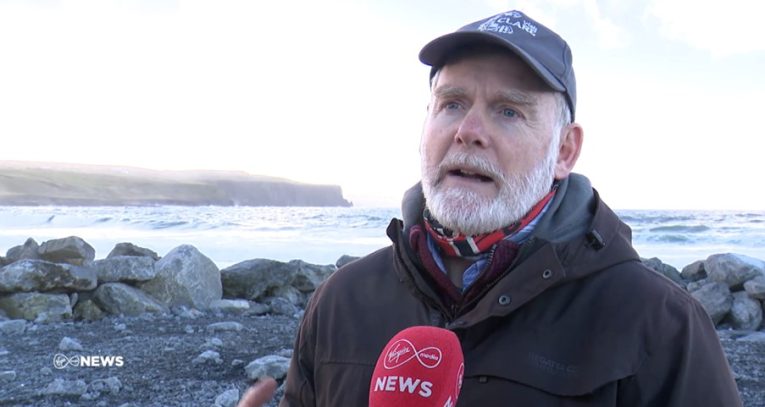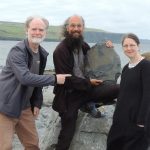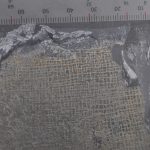Discovery of new 315 million year old fossil sponge, Cyathophycus balori
03.01.2024
Dr. Eamon Doyle on Virgin Media News – 04/01/2024
An extraordinary new species of fossil sponge has been discovered in the rocks that make up the Cliffs of Moher by Dr. Eamon Doyle, geologist for the Burren and Cliffs of Moher UNESCO Global Geopark. The sponge, named Cyathophycus balori, is an exceptionally large example of a type of fossil sponge that was previously only known from much older rocks. It is the first record of this type of fossil sponge from Ireland. The fossil sponge is 315 million years old, and its excellent preservation is highly unusual. This new discovery has just been published in the international geological journal Geobios: Botting, J.P., Muir, L.A. and Doyle, E.D. 2023. An oversized, late-surviving reticulosan sponge from the Carboniferous of Ireland. Geobios, 80, 1 -13.
Lead author and international fossil sponge expert Dr. Joseph Botting says ‘’I was amazed to see the size and excellent state of preservation of this fossil; this was totally unexpected. This find offers important insights into the evolution of sponges and how some species can survive in niche environments where few other species can live. Finding such large and intact specimens is exceptional.’’ Co-author Dr. Lucy Muir agreed ‘‘this is a wonderful find and reminds us that there are still new and interesting fossils to be found which help us understand the story of Life on Earth’’. Dr. Botting and Dr. Muir are both Honorary Research Fellows at Amgueddfa Cymru -National Museum Wales.
The sponge is vase-shaped, up to 50 cm tall with a circular opening at the top surrounded by a ring of eyelash-like structures. The new species was named after the mythological giant Balor, whose eye wreaked havoc on his enemies when opened. When it was alive the new sponge would have resembled the modern Venus Flower Basket sponge that often features on deep sea wildlife documentaries.
The sponge was originally composed of a rectangular meshwork of tiny spicules made of silica, held together by a thin organic membrane. When they die, they usually fall apart quickly, and often only scattered remains of the spicules are preserved as fossils.
Geopark geologist Dr. Eamon Doyle said ‘’I knew when I found it that it was a significant discovery and contacted Dr. Botting immediately. Having a global expert working on the fossil has been fantastic and shows that there are still internationally important new fossils to be found here.’’
Sponges are creatures with a very basic body plan, they don’t have a nervous system or circulatory system, but they are very abundant and form an important part of our biodiversity today. They filter large volumes of water for microscopic organisms that they feed on.
Dr. Doyle was the highlight of the media at the beginning of 2024 and his discovery was featured on various channels and newspapers including Virgin Media News, the Irish Independent, Clare FM, and the front page of the Irish Times to name a few.
Watch his feature on Virgin Media News here, https://www.virginmediatelevision.ie/player/show/1513/214570/0/. (Dr. Eamon Doyle features towards the end of this news broadcast).
Press release written by Mark Dunphy of Dunphy Communications
- Dr. Eamon Doyle (Burren and Cliffs of Moher UNESCO Global Geopark Geologist),Dr. Joe Botting and Dr. Lucy Muir (International fossil sponge experts. They are Honorary and research fellows at the National Museum of Wales) – Left to Right
- The upper part of the new fossil sponge Cyathophycus balori shows the vertical eyelash-like structures at the very top. The fossil sponge is the largest of its kind and is 315 million years old.

